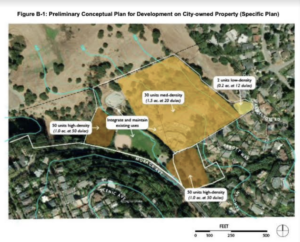Why does the City not want a new City Council to consider the Housing Element?
The City is planning to have the proposed Housing Element approved prior to the November 8, 2022 Election and has agendized consideration of the Housing Element for the October 17, 2022 Council meeting.
The City is moving ahead of the City Council election to approve the Housing Element. The regular October 3, 2022, City Council meeting was cancelled without explanation* during the contested City Council campaign when candidates and the public could have recorded their opinions at the meeting on the Housing Element or other issues. The City Council during their regularly scheduled, but cancelled, meeting on October 3 could have amplified Housing information and made factual corrections to City positions.
Residents of Piedmont received the unprecedented City Administrator’s letter dated September 30, 2022 approximately a week before voters may begin voting in the election. The letter disparages the positions of certain candidates and supports the positions of other City Council candidates, while claiming to provide factual information about the Housing Element.
The City Administrator, Sara Lillevand and Mayor Teddy Kind are responsible for setting the Council meeting agendas. Lillevand has announced her retirement by April 2022 and King, is a “lame duck” and will no long be on the Council following the certification of the November 8 election.
Correction and amplification of information sent to voters by the City Administrator on September 29, 2022:
- The Charter states the Council shall proposes a zoning plan, but where zoning is proposed to be changed as within the proposed Housing Element voters must approve the zoning changes.
- An approved Housing Element is not just a plan to sit on a shelf, for the State requires implementation and developers and property owners gain legal rights.
- The Housing Element once approved by voters and the Council becomes law in Piedmont with all incumbent factors, such as lawsuits, site locations, property rights, and the rule of law.
- The City Council members and the City staff do not have the authority under the City Charter to change the zoning as proposed. The Piedmont City Charter states clearly, “The Council may classify and reclassify the zones established, but no existing zones shall be reduced or enlarged with respect to size or area, and no zones shall be reclassified without submitting the question to a vote at a general or special election. No zone shall be reduced or enlarged and no zones reclassified unless a majority of the voters voting upon the same shall vote in favor thereof;”
- Only the voters per the City Charter have a right to approve the proposed Housing Element zoning changes.
- The City owns much of the property proposed to receive a zoning change, but changes will need voter approval, if the City Council adheres to the City Charter.
- Referring voters to the City website leads to false and incomplete information.
- No written legal opinions on Piedmont voters rights, density, single-family housing, classifications, reclassifications, or Piedmont liability have been provided publicly, indicating legal problems, and avoidance of providing points and authorities for public consideration.
- Despite threats to Piedmonters, the Piedmont City Council and City staff have known of the need for voter approval of proposed zoning changes and failed to date to schedule voter consideration to meet the State deadline of May 23, 2023.
- The loss of local control by the City’s rejection of legally required voting over zoning is happening now in Piedmont, not because of Sacramento, but because the Piedmont City Council is not following the City Charter and scheduling the required timely local election for continued voters control of zoning in Piedmont.
- The City continues to spend well over a million dollars on banners, consultants, puzzles, incorrect flyers, staff time, and a letter thwarting Piedmont’s City Charter and voters rights, while complaining about potential election costs.
- Sending a City letter to Piedmonters shortly before an election regarding a contested campaign issue is legally questionable particularly by using false and incomplete factual information.
- The City Administrator’s letter mentions nothing about the duty of the City Administrator to uphold the City Charter as requiring voter approval of the proposed zoning changes.
For decades, a core principle of PCA is following the rule of law and upholding voters rights.
- UPDATE: The City Clerk announced on 10.3.2022, “The City Council meeting scheduled for Monday, October 3rd has been cancelled due to a medical emergency in the City Administrator’s family.”



